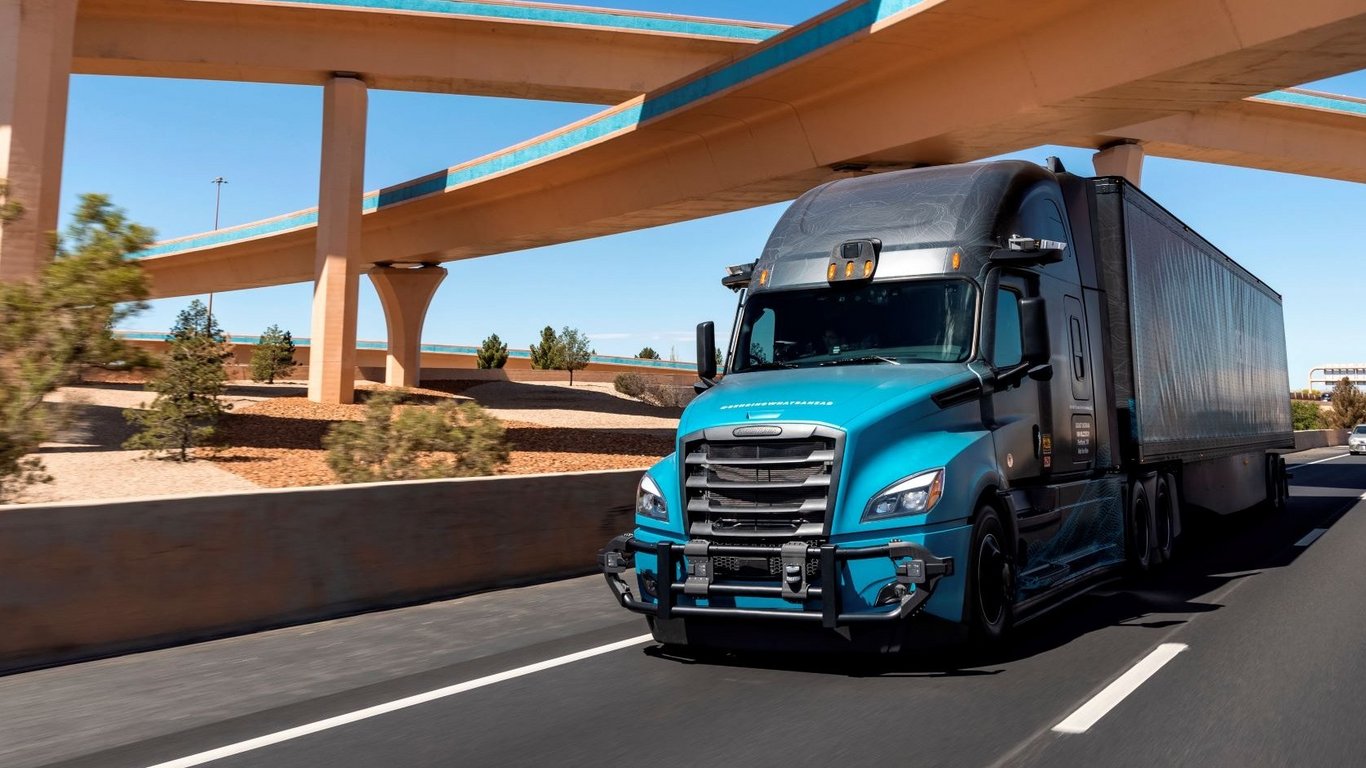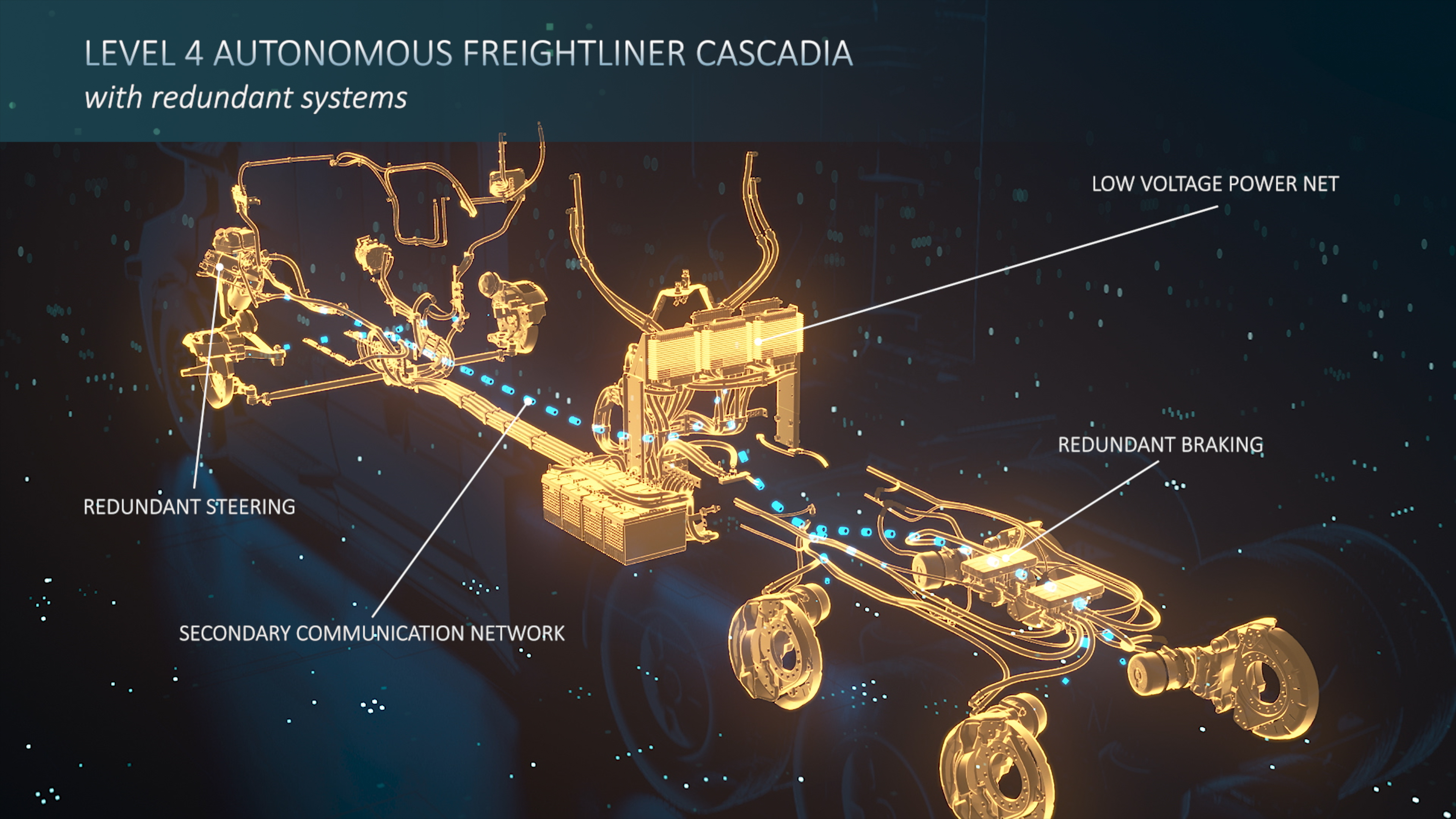SAE standard J3016 defines the classification and the different degrees of automation. It was published by SAE International (formerly: Society of Automotive Engineers) and has defined the industry-wide standard since January, 2014.

Our path for autonomous trucks
-
Level 0: No automation
All driving maneuvers are carried out by the driver. May involve assistance from warning or assistance systems.
-
Level 1: Assistance Systems
The driving automation system (when activated) performs part of the dynamic driving task; either the longitudinal or the lateral movement control of the vehicle. It is switched off immediately at the request of the driver.
The longitudinal movement control of the vehicle includes maintaining the set speed and detecting a preceding vehicle in the lane of the subject vehicle, maintaining a reasonable distance from the vehicle in front, and applying acceleration or braking to keep the vehicle at that speed or distance.
The vehicle's lateral motion control via acceleration and deceleration (in operation), which involves detecting vehicle position relative to lane boundaries and applying steering and/or differential braking to maintain proper lateral positioning.
Only in defined scenarios are drivers supported by driver assistance systems (for example, lane tracking).
The driver constantly monitors the system and, if necessary, takes over the delegated tasks.
-
Level 2: Semi-automated driving
Only in suitable scenarios does the system take over part of the dynamic driving task by driving the vehicle in the transverse and longitudinal direction. It is deactivated immediately at the request of the driver.
The driver constantly monitors the system and, if necessary, takes over the delegated tasks.
-
Level 3: Conditionally automated driving
Only in suitable scenarios does the system take on the entire dynamic driving task. It is deactivated immediately at the request of the driver.
The driver no longer has to constantly monitor the system and can deal with tasks that are not related to driving.
If the system sends a takeover request to the driver, he or she must take it over again in a timely manner.
-
Level 4: Highly automated driving
Only in certain scenarios does the system take on the entire dynamic driving task. It may switch off when a driver takes over.
In these scenarios the vehicle does not send a takeover request to the driver because it can handle the situation completely by itself
-
Level 5: Fully automated driving
The fully automated vehicle can drive autonomously on all mapped roads that can be used by a human driver. The user simply enters a destination and the vehicle navigates by itself to that destination.
The system can handle all scenarios autonomously and handles the entire dynamic driving task. It may switch off if a driver takes over.
Sources can be found here.
Technology
Level 2 vehicles currently use two sensors, but far more will be employed in the next development stage at Level 4. These sensors will also be much more powerful than those currently used. This will result in a completely new volume of data that will place very high demands on the quality of the data processing. The aim is to replicate the driver’s sense of perception by completely scanning traffic and vehicle situations with the help of a wide variety of sensor technologies. Each sensor has its own specific properties that enable it to contribute to the system’s overall performance and boost safety. The basis for this is provided by three different technological approaches: radar, camera and lidar. The safety, precision and long-term availability of these systems will already play a key role at market launch. All safety-related functions will thus be equipped with redundant systems, as is the case with aircraft. If the primary control system should fail, the redundant systems will smoothly go into action and take over its tasks.
In recent years, the experts at Daimler Truck North America have successfully developed the first scalable, safe and reliable platform for autonomous trucks: the “autonomous-ready Cascadia” with redundant functions is based on the industry-leading flagship model of the Daimler Truck brand Freightliner and is the basic building block for self-driving trucks. Critical systems such as steering and braking are available as backups in two versions and are continuously monitored by the vehicle to ensure maximum safety. In the event of malfunctions or faults, the newly developed redundant systems can safely control the truck. The “autonomous-ready” Freightliner Cascadia is therefore fully suitable for the integration of autonomous software, hardware and computing systems. With the redundancy of the systems, the autonomously driven truck can make a significant contribution to increasing road safety. Daimler Truck sees this as another important step on the road to accident-free driving.

The Autonomous Technology Group
According to Daimler Truck, the next step in the evolution of automated driving in the logistics sector will be autonomous driving as defined by SAE Level 4. The intermediate step at Level 3 would not be worthwhile for logistics customers because the decisive factor for a truck must always be its total cost of ownership. Specifically, the company wants to series-produce Level 4 autonomous trucks by the end of this decade.
In order to achieve this goal more quickly and efficiently, Daimler Truck has pooled all of its automated driving activities and expertise worldwide in the Autonomous Technology Group. Its main tasks are the implementation of the overall automated driving strategy, the research and development of the vehicles and the creation of an appropriate infrastructure for the vehicles’ operational use.